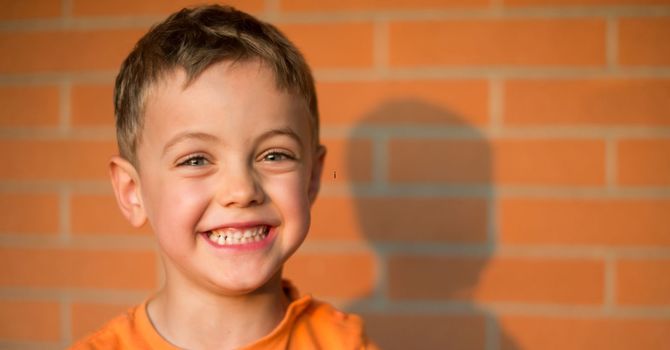As part of our continuing blog series on Make It Stick, this entry delves into the transformative ideas that the authors present about learning, memory, and human potential. By exploring cutting-edge research and compelling narratives, the book challenges common misconceptions about intelligence and offers actionable strategies to enhance cognitive abilities. From the science of neuroplasticity to the power of deliberate practice, these concepts redefine how we think about success, resilience, and the limitless capacity of the human brain.
The 1970 Nursery School Study: The Power of Self-Discipline
In a groundbreaking 1970s experiment, Walter Mischel presented nursery school children with a marshmallow and a dilemma: eat it immediately or wait 15 minutes for a second treat. Mischel observed that self-discipline, even at an early age, significantly influenced long-term success. Children who resisted temptation demonstrated higher academic achievements and more successful careers in later years. This study underscores how focus and self-regulation, fueled by motivation, can profoundly shape our futures (162-163).
James Paterson and the Mnemonic Journey
James Paterson’s journey into the world of mnemonics began as a simple attempt to memorize classwork more efficiently, but it soon grew into a passion for memory competitions. His mastery of memory techniques not only earned him accolades but also revealed the transformative potential of strategic learning. By integrating these methods, Paterson uncovered the ability to organize, retain, and apply knowledge in ways that pushed cognitive limits (163-164).
John Fremont: A Historical Parallel to Cognitive Growth
John Fremont’s daunting trek across America during the 1846 U.S. campaign reflects the brain’s journey toward growth. Just as Fremont needed infrastructure to navigate the vast landscape, our brains require sustained effort and learning to develop pathways that enable reasoning, problem-solving, and creativity. This parallel illustrates that cognitive development, like exploration, demands intention and persistence (165-166).
Neuroplasticity: The Brain’s Boundless Potential
Neuroplasticity—the brain's ability to rewire itself—reveals that intellectual capabilities are far more adaptable than once thought. From infancy’s synaptic bursts to adulthood’s fine-tuned neural connections, the brain constantly evolves in response to learning and experience. These insights suggest that effortful engagement can reshape the brain, fostering lifelong growth (166-168).
Norman Doidge: The Brain That Changes Itself
Norman Doidge’s The Brain That Changes Itself highlights remarkable stories of resilience and neuroplasticity. Patients once thought incapable of recovery overcame profound challenges by retraining their brains through sensory substitution and intentional practice. These examples illustrate the brain’s capacity to adapt and thrive in the face of adversity (168-169).
Is IQ Mutable? Understanding Intelligence
IQ, often considered innate, is influenced by both genetics and environment. Research shows that enriched early education and proper nutrition can elevate IQ, particularly for children from disadvantaged backgrounds. This evidence challenges the notion of fixed intelligence and highlights the profound impact of external factors on cognitive development (173-176).
Brain Training and Types of Intelligence
While strategies for improving crystallized intelligence—accumulated knowledge—are well-established, efforts to enhance fluid intelligence, which involves abstract reasoning, remain uncertain. Studies suggest that targeted working memory exercises can temporarily boost fluid intelligence, but results are inconsistent, emphasizing the need for further exploration into how we can train different aspects of the mind (176-178).
Richard Nisbett: Environmental Multipliers
Richard Nisbett’s concept of “environmental multipliers” illustrates how small genetic predispositions, such as curiosity, can be amplified by stimulating environments. His work emphasizes the importance of creating opportunities for learning and exploration to maximize intellectual potential (178-179).
Growth Mindset: Carol Dweck’s Revolutionary Findings
Carol Dweck’s research reveals the transformative power of a growth mindset. Teaching students that effort leads to new neural connections inspires resilience and persistence. Conversely, emphasizing innate intelligence can foster a fear of failure and hinder progress. This paradigm shift encourages embracing challenges as opportunities for growth (179-182).
Deliberate Practice: The Road to Expertise
Mastery in any field requires deliberate practice—focused, challenging, and goal-oriented effort. Anders Ericsson’s research shows that expertise stems from thousands of hours of intentional practice, not merely innate talent. This process rewires the brain, creating the foundation for exceptional performance across diverse domains (183-185).
Memory Cues: Mnemonic Mastery
Mnemonic devices like memory palaces allow individuals to organize and recall complex information with ease. Students preparing for high-stakes exams use these tools to manage anxiety and boost confidence. By associating vivid images with key concepts, they transform rote memorization into dynamic, accessible knowledge (185-190).
The Marlys Example: Pressure and Preparation
Faced with rigorous exams, Marlys utilized memory palaces to master her material and confidently tackle her essays. This method enabled her to access a vast repository of knowledge under pressure, showcasing how structured memory techniques can turn stress into success (190-194).
Paterson’s World Memory Championship
At his first World Memory Championships, James Paterson demonstrated the heights of mnemonic training, memorizing sequences of numbers and cards with remarkable accuracy. His achievements underscore how deliberate practice and memory techniques can push cognitive boundaries and redefine what we believe to be possible (194-197).
Effortful Learning Changes the Brain
The science behind learning reveals a powerful truth: effort changes the brain. With every challenge we undertake, new neural pathways form, extending our abilities and enabling us to tackle more complex tasks. This process, driven by grit and persistence, illustrates that our intellectual potential is not static but shaped by what we do and how we approach it (199).
The lessons in this chapter of Make It Stick illuminate how intelligence, learning, and memory are deeply interconnected. They show us that mastery is not reserved for the exceptionally gifted but for those who commit to the process of growth. By cultivating discipline, embracing challenges, and using proven strategies, anyone can unlock their cognitive potential and achieve surprising outcomes.
Eckert Centre is staffed with educational psychologists in Calgary, Alberta who specialize in teaching students of all ages the science of learning. Academic coaching services can support students of all ages to make what they are learning stick!
For more insights, information, or to book an appointment, please visit www.eckertcentre.com and click the appointment button. You can also reach our team in three other convenient ways: 1) complete the submit form on our website; 2) email us at info@eckertpsychology.com; or 3) call and speak to our receptionist every business day at 403-230-2959. Yes, a real human will answer your call.
Madison is a Psychology Assistant & Digital Marketing Assistant at Eckert Centre. She's currently deepening her understanding of psychology at the University of British Columbia. Madison brings her passion for mental health to our community through her writing. As our blogger in residence, her contributions offer a fresh perspective and shed light on the importance of mental wellbeing and school psychology. We are grateful for her eloquent words and the insights she shares on her journey towards cultivating a "Wise Self."
Works Cited
Brown, Peter C., Henry L. Roediger III, and Mark A. McDaniel. Make It Stick: The Science of Successful Learning. Belknap Press of Harvard University Press, 2014.



